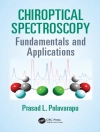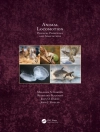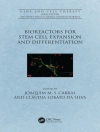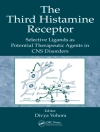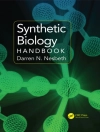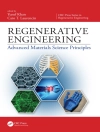This book presents cutting-edge papers and perspectives on the transport of oxygen to tissues by scientists in a multitude of disciplines such as biochemistry, engineering, mathematics, medicine, physics, physiology, veterinary and complementary medicine. The book is composed of the following 6 parts: Brain Oxygenation and Function, Tumor Oxygenation and Metabolism, Muscle Oxygenation and Sports Medicine, Cell Metabolism and Tissue Oxygenation, Methodology of O
2 Measurements, and Special Topics. The articles in this book have been presented at the 42nd annual meeting of the International Society on Oxygen Transport to Tissue (ISOTT 2019) held in Albuquerque, New Mexico, USA, from July 28 to July 31, 2019. Academics, clinical and industry researchers, engineers, as well as graduate students who are interested in oxygen transport to tissue will find this book a great reference and a useful learning resource.
Tabla de materias
Part I. Oxygen Metabolism and Health Monitoring.- Chronic Ketosis Modulates HIF1α Mediated Inflammatory Response in Rat Brain.- Event Related NIRS and EEG Analysis for Mental Stress Monitoring.- Simulation Study of Breast Cancer Lipid Changes Affecting Membrane Oxygen Permeability.- Updated Evaluation of Cholesterol’s Influence of Oxygen Permeability.- Systems biology model of cerebral oxygen delivery and metabolism during therapeutic hypothermia: application to the piglet model.- Effect of Adrenaline on Cerebral Blood Oxygenation Measured by NIRS in a Rat Asphyxia Cardiac Arrest Model.- Two consecutive invasive surgeries utilizing Zymogen Protein C (ZPC) that enhanced patient safety and reduced costs.- Scanning Tissue-Oxygen Needle-Probe.- Transcranial photobiomodulation of clearance of beta-amyloid from the mouse brain: the effects on meningeal lymphatic drainage and blood oxygen saturation of the brain.- Near-Infrared Spectroscopy Might Help Prevent Onset of Cerebral Hyperperfusion Syndrome.- Part II. Oxygen Measurement and Modeling.- Online assessment of hemodynamics in suctioned volume of biological tissue by the embedded Near-infrared Spectroscopy sensor.- Skeletal Muscle Deoxygenation and its Relationship to Aerobic Capacity During Early and Late Stages of Aging.- Near-Infrared Spectroscopy (NIRS) of Muscle Hb O2 and MBO2 Desaturation During Exercise.- Relationship between Corticosteroid Dose and Muscle Oxygen Consumption in Recipients of Hematopoietic Stem-Cell Transplantation.- Relationship between the Borg Scale Rating of Perceived Exertion and Leg Muscle Deoxygenation during Incremental Exercise in Healthy Adults.- Effects of Exercise Training on Cardiac and Skeletal Muscle Functions in Patients in Chronic Heart Failure.- Reduced Scattering Coefficient During Incremental Exercise is Constant without being Affected by Changes in Muscle Oxygenation or Hemodynamics.- Changes in the laterality of oxygenation in the prefrontal cortex and premotor area during a 20-min moderate-intensity cycling exercise.- Relationship Between Decrease of Oxygenation During Incremental Exercise, Partial Pressure End-Tidal Carbon Dioxide: Near-Infrared Spectroscopy Vector Analysis.- Cerebral Oxygenation Dynamics during Incremental Exercise: Comparison of Arm Cranking and Leg Cycling.- Localization of Deep of Deep Ischemia and Hemorrhage in Preterm Infants’ Head with Near Infrared Optical Tomography: A Numerical Case Study.- Discerning Membrane Steady-State Oxygen Flux by Monte Carlo Markov Chain Modeling.- Part III. Tumor Oxygenation and Modeling.- Role of Micro RNA Expression for Proliferation and Apoptosis of Tumor Cells: Impact of Hypoxia-Related Acidosis.- Functional Impact of Acidosis-regulated Micro RNAs on the Migration and Adhesion of Tumor Cells.- Impact of Acidosis-Regulated Micro RNAs on the Expression of Their Target Genes in Experimental Tumors In Vivo.- An Observation on Enhanced Extracellular Acidification and Lactate Production Induced by Inhibition of Lactate Dehydrogenase A.- Keynote Lecture – The Warburg Effect: Historical Dogma versus Current Rationale.- The Acidic Tumor Microenvironment Affects Epithelial-Mesenchymal Transition Markers as well as Adhesion of NCI-H358 Lung Cancer Cells.- Assessment of the probability of tumor control for prescribed doses based on imaging of oxygen partial pressure.- On the feasibility of Pulse Wave Velocity Imaging for remote assessment of physiological functions.- Mechanisms of sound-induced opening of the blood-brain barrier.- Multimodal measurements of brain tissue metabolism and perfusion in a neonatal model of hypoxic-ischaemic injury.- Cerebral Spreading Depression Transient Disruption of Cross Frequency Coupling in the Rat Brain: Preliminary Observations.- Long-Term Blue Light Exposure Changes Frontal and Occipital Cerebral Hemodynamics: Not all Subjects React the Same.- Changes in Prefrontal Cortex Asymmetry Due to Standing Loading in Stroke Patients Measured by NIRS.- Parasympathetic Nervous Activity Associated with Discoordination between Physical Acceleration and Heart Rate Variability in Patients with Sleep Apnea.- The Changes in Brain Oxygenation during Transcranial Alternating Current Stimulation as Consequences of Traumatic Brain Injury: A Near-infrared Spectroscopy Study.- Error Evaluation for Automated Diameter Measurements of Cerebral Capillaries Captured with Two-Photon Laser Scanning Fluorescence Microscopy.- Potential Biomarker for Triple Negative Breast Cancer Invasiveness by Optical Redox Imaging.- Optical redox imaging differentiates triple-negative breast cancer subtypes.- Oxygen-sensing Paramagnetic Probes for Clinical Oximetry.- Evaluation of the Quality of Chest Compression with Oxy-hemoglobin Level by Near-infrared Spectroscopyin a Rat Asphyxia Cardiac Arrest Model.- Altered Behavioural Performance in the Neuron-specific HIF-1 and HIF-2 deficient mice following Chronic Hypoxic Exposure.- Effect of Adrenaline on Cerebral Blood Oxygenation Measured by NIRS in a Rat Asphyxia Cardiac Arrest Model.- Addition of Drag Reducing Polymers to Colloid Resuscitation Fluid Enhances Cerebral Microcirculation and Tissue Oxygenation after Traumatic Brain Injury Complicated by Hemorrhagic Shock.- Effects of 20-minute intensive exercise on subjects with different working memory bases.- Supine cycling exercise enhances cerebral oxygenation of motor-related areas in healthy male volunteers.- Keynote Lecture – What is the Meaning of an Oxygen Measurement? Analysis of methods purporting to measure oxygen in targeted tissues.- Part IV. Brain Oxygenation and Function.- Assessment of Cerebral Blood Oxygenation by Near-Infrared Spectroscopy before and after Resuscitation in A Rat Asphyxia Cardiac Arrest Model.- Effect of 3-Day and 21-Day Hypoxic Preconditioning on Recovery following Cerebral Ischemia in Rats.- Time Series Tracking of Cerebral Microvascular Adaptation to Hypoxia and Hyperoxia Imaged with Repeated in vivo Two-Photon Microscopy.- Environmental Enrichment Improved Cognitive Performance in Mice under Normoxia and Hypoxia.- Effect of Prolonged Pressure on Hemodynamics of Sacral Tissues Assessed by Diffuse Optical Imaging: A Pilot Study.- In-phantom Validation of Time-Domain Near-Infrared Optical Tomograph Pioneer for Imaging Brain Hypoxia and Hemorrhage.- Online Non-invasive Assessment of Human Brain Death by Near-infrared Spectroscopy with Protocol of O2 Inspiration.- Not removing the glossy white cover from adhesive INVOS neonatal sensors affects the oxygenation measurement.- Probe design optimization for time-domain NIROT ‘Pioneer’ system for imaging the oxygenation of the preterm brain.- Effect of blood flow onhemoglobin and myoglobin oxygenation in contracting muscle using near infrared spectroscopy.- Magnetoresistance Properties of Red Blood Cells in Plasma Combined with Several Magnetic Beads Passing Two Cu Electrodes.- Measurement of Tissue Oxygen as a Novel Approach to Optimizing Red Blood Cell Quality Assessment.- Prox-1 and Hif-1a Genes Expression of Primo Vessel in Rabbit’s Lymphatic Vessel.- On the Feasibility of Pulse Wave Velocity Imaging for Remote Assessment of Physiological Functions.- Index.
Sobre el autor
Edwin M. Nemoto, Ph D, 1969 in Physiology, Biochemistry and Radiation Physics , Rutgers The State University mentor Dr. Harry M. Frankel. He studied the effects of hyperthermia on cerebral blood flow regulation and metabolism. Postdoctoral Fellowship (1969-1971) at Cardiovascular Research Institute, UCSF mentor, Dr. John Severinghaus. Studied CSF acid base balance. At the University of Pittsburgh 1972-2009, Department of Anesthesiology and Critical Care Medicine as Director of Anesthesia and CCM research Chair, Dr. Peter Safar, Neurosurgery and Radiology and studied brain circulation and metabolism in cardiac arrest, traumatic brain injury and stroke. In 2009 at the University of New Mexico, Director of Research of Neurosurgery, under Chair, Dr. Howard Yonas until June, 2020, semiretired and continues his research and work on his startup company, Shear IT, LLC. He hosted ISOTT meetings in Pittsburgh, PA in 1995 and again in Albuquerque, NM in 2019.
Eileen M. Harrison BSc, is a graduate in physiology from St Andrews University and was a freelance medical/pharmaceutical translator for a range of international companies until 2010.
She has been associated with ISOTT for over 35 years and since 2006 she has been Technical Editor of all the “Oxygen Transport to Tissue” volumes. In 2019 she also took on the role of Language Editor following the passing away of Laraine Visser.
Sally C. Pias is Associate Professor of Chemistry and Associate Chair of the Department of Chemistry at the New Mexico Institute of Mining and Technology (New Mexico Tech) in Socorro, NM, USA. She is a computational chemist with a research focus on oxygen transport modeling. She earned a Ph D in Chemistry with specialization in Biochemistry from New Mexico State University (USA), then received postdoctoral training in computational chemistry at Stony Brook University (State University of New York, USA) as a Computing Innovation Fellow. Dr. Pias is an active member of the Bioenergetics, Mitochondria, and Metabolism Subgroup of the Biophysical Society. She is a past recipient of ISOTT’s Melvin H. Knisely Award and a current member of the ISOTT Executive Committee. Dr. Pias coorganized the ISOTT 2019 meeting, along with Edwin Nemoto and Denis Bragin.
Denis E. Bragin is an Associate Professor of Translational Neurosciences at Lovelace Biomedical Research Institute and Adjunct Associate Professor at the Department of Neurosurgery University of New Mexico School of Medicine, Albuquerque, NM, USA. He is a biophysicist with a research focus on the circulation, oxygen supply, and metabolism of the brain under various pathological conditions. He earned a Ph.D. in Biology with specialization in Biophysics from the Voronezh State University (Russia), then received postdoctoral training in Neurosciences at Neuroscience Research Center (NWFZ), Charité Medical School, Humboldt University, Berlin (Germany) and Department of Neurosurgery, University of New Mexico School of Medicine (USA). Dr. Bragin is an active member of the American Heart/Stroke Association (AHA), the International Society of Cerebral Blood Flow and Metabolism (ISCBFM), the Society of Photo-Optical Instrumentation Engineers (SPIE) and the ISOTT. A Stroke Council of the AHA elected him as a Fellow of the American Heart Association (FAHA). Dr. Bragin co-organized the ISOTT 2019 meeting, along with Edwin Nemoto and Sally Pias.
David K. Harrison BSc, Ph D (Uni. Dundee), Dr Med Habil (Uni Erlangen/Nuremberg), FIPEM was the Head of the Durham Unit of the Regional Medical Physics Department and Honorary Senior Lecturer in Medical Physics, Institute of Cellular Medicine, Newcastle University, UK until retiring from the NHS in 2009. He then became honorary Senior Scientific Consultant for Oroboros Instruments (Innsbruck, Austria), finally retiring in 2016.
He is author or co-author of over 130 publications, mainly in the field of blood flow and oxygen transport to tissue. He has been a member of ISOTT for over 35 years including President in 1996. Since 2004 he has been Scientific Editor of all of the “Oxygen Transport to Tissue” volumes.
Joseph C. La Manna, Ph D is The Jeannette M. and Joseph S. Silber Professor for the Study of Brain Sciences in the Department of Physiology & Biophysics at Case Western Reserve University. He has been a member of ISOTT since 1974 and served as Past President of the Society (2009). He is the Series Editor of the ISOTT Proceedings. He has been involved in cerebrovascular research for 40 years. His research is concerned with brain metabolism, energy and cerebral blood flow, angiogenesis and neurodegeneration. The role of these mechanisms in tissue response to pathological insults (stroke, cardiac arrest and resuscitation, hypoxia) is being actively investigated. His recent research has centered on ketones, cerebral angiogenesis and the role of hypoxia-inducible factor-1 in physiological adaptation to hypoxia, neuroprotection and ischemic preconditioning. He has authored or co-authored over 200 research papers and review chapters.


